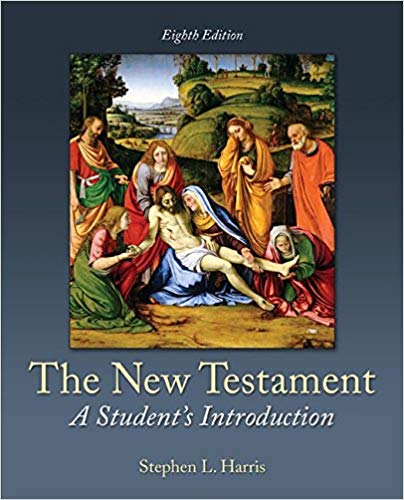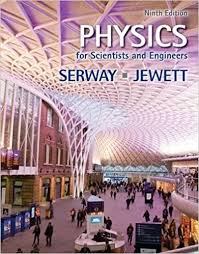Description
Test Bank For The New Testament A Student’s Introduction 8th Edition by Stephen Harris
Chapter 02 How the New Testament was Formed and Handed Down to us
Multiple Choice Questions
1. (p. 24) The official inventory of books considered to be authoritative sources of doctrinal and ethical beliefs by a religious community is called
A. apocrypha.
B. scripture.
C. gospel.
D. canon.
2. (p. 39) Each book in the New Testament first appeared as a separate document independent of the others and circulated by itself in different geographical areas, with the exception of
A. Luke-Acts.
B. John-Mark.
C. Matthew-Luke.
D. 1 John-2 John.
3. (p. 23) What is the only canonical work to survive?
A. Acts
B. Matthew
C. Revelation
D. There are none.
4. (p. 23) How many extant manuscripts with scriptural variations are there?
A. 4
B. 27
C. hundreds
D. 144,000
5. (p. 26) Who is “the disciple whom Jesus loved?”
A. No one knows (although some speculate that it was John).
B. Mark
C. Paul
D. Judas
6. (p. 26) Who were not eyewitnesses of Jesus’ ministry?
A. Mary and Simon
B. Thomas and Matthew
C. John and Peter
D. Mark and Luke
7. (p. 32-33) What group pioneered the use of the “codex,” i.e. a “book” of page-sized manuscript sheets bound together at a hinge?
A. Greeks
B. Gnostics
C. Christians
D. Romans
8. (p. 33-34) Which codex is the most valuable—because it includes all twenty-seven New Testament books, as well as the Epistle of Barnabas and the Shepard of Hermas?
A. Codex Sinaiticus
B. Codex Claromontanus
C. Codex Alexandrinus
D. Codex Vaticanus
9. (p. 30) A major development at the end of the fourth century CE was the establishment of
A. papal authority.
B. a centrally located church.
C. the permanent New Testament canon.
D. the Codex Sinaiticus.
10. (p. 30) Who translated both the Old and the New Testament into Latin?
A. Jerome
B. Marcion
C. Martin Luther
D. Bishop Berkley
11. (p. 30) Which Bible has remained the official Bible of the Roman Catholic Church since it was first translated into Latin in the fourth-century CE?
A. King James
B. Vulgate
C. Codex Vaticanus
D. Septuagint
12. (p. 30) Which Christian writings were once regarded as virtually equal to “genuine” New Testament works but have since been relegated to obscurity?
A. Jude
B. the Shepard of Hermas
C. the Wisdom of Solomon and the Wisdom of Dionysus
D. the Epistle of Barnabas and the Apocalypse of Peter
13. (p. 32) “Harmonization” refers to what practice?
A. the practice of signing hymns in unison
B. the practice, commonly of scribes, whereby the wording of one Gospel was modified to conform to that of another
C. the practice of knocking down all the social and political barriers between people
D. the practice of fitting all scripture into the same genre
14. (p. 30) What is the oldest surviving manuscript fragment of a New Testament book?
A. the Epistle of Barnabas
B. four chapters of Hebrews
C. four verses from John 18
D. the last ten verses of Revelation
15. (p. 36) Modern translations of the Bible, such as the New Jerusalem Bible, the Revised English Bible, the New International Version, and the New American Bible, have what advantage over the King James Version?
A. Translators worked from a far better Greek text than was available to the editors of the King James Version, and drew on expert scholarship from interdisciplinary fields. Modern translations are also more readable to the average person.
B. Modern translators used the newly discovered original manuscripts.
C. Translators are now using more literary devices and taking poetic license more freely.
D. Translators now use the universal language of the Dead Sea Scrolls to communicate more effectively.
16. (p. 35) When did the entire Bible first become available in English?
A. 11th century
B. 14th century
C. 200 CE
D. 17th century
17. (p. 35) Who translated the Bible into English because he wanted to make Scripture accessible to Christian laypeople who did not understand Latin?
A. John Wycliffe
B. William James
C. William Tyndale
D. Martin Luther
18. (p. 35) Whose Bible translation was the first in a modern language (German) not based on the Latin Vulgate, but rather on the original Hebrew and Greek?
A. Athanasius
B. Johannes Gutenberg
C. William Tyndale
D. Martin Luther
19. (p. 35) Who was the first English translator to work directly from Hebrew and Greek manuscripts?
A. a committee of 72 scholars whose names were not recorded in history
B. William Tyndale
C. James Strong
D. Stephen L. Harris
20. (p. 35) What happened to William Tyndale before he could complete his translation from the Hebrew and Greek into English?
A. He was tried for heresy and burned at the stake.
B. He died of a heart attack.
C. He was made a saint by the Catholic Church.
D. He was arrested for translating without a license.
True / False Questions
21. (p. 24) At no time did a single church authority or council of church leaders formally decide on the contents of the Christian Scriptures.
TRUE
22. (p. 29) The first Christian emperor was Constantine I (306-337 CE).
TRUE
23. (p. 32) Scribes commonly modified the wording of one Gospel to make it conform to that of another.
TRUE
24. (p. 33-34) The Codex Sinaiticus was discovered in the mid-1800s in a monastery at the foot of Mt. Sinai.
TRUE
25. (p. 36) Modern translations of the Bible are inferior to the King James Version because of the ambiguities found in most modern languages.
FALSE
26. (p. 35) Martin Luther vigorously protested corruption and abuses in the Roman Catholic Church.
TRUE
27. (p. 35) The Roman Catholic Church sent for William Tyndale with the request of working on translating the Latin Vulgate into modern languages.
FALSE
28. (p. 35) The readership of Scripture grew enormously due to the invention of movable type in 1455, which made it possible to print books relatively quickly.
TRUE
29. (p. 35) As a result of the Protestant Reformation, the readership of Scripture grew quickly.
TRUE
30. (p. 26) Well into the 17th century, most churches recognized only the one Gospel known to their local group.
FALSE
31. (p. 35) The Protestant Reformation began in Germany in 1517.
TRUE
32. (p. 35) The Venerable Bede was the first person credited with translating selected books of Scripture into English.
TRUE
33. (p. 38) The Scholars Version of the Bible is an in-progress multivolume translation with extensive annotation.
TRUE





Be the first to review “Test Bank For The New Testament A Student’s Introduction 8th Edition by Stephen Harris”